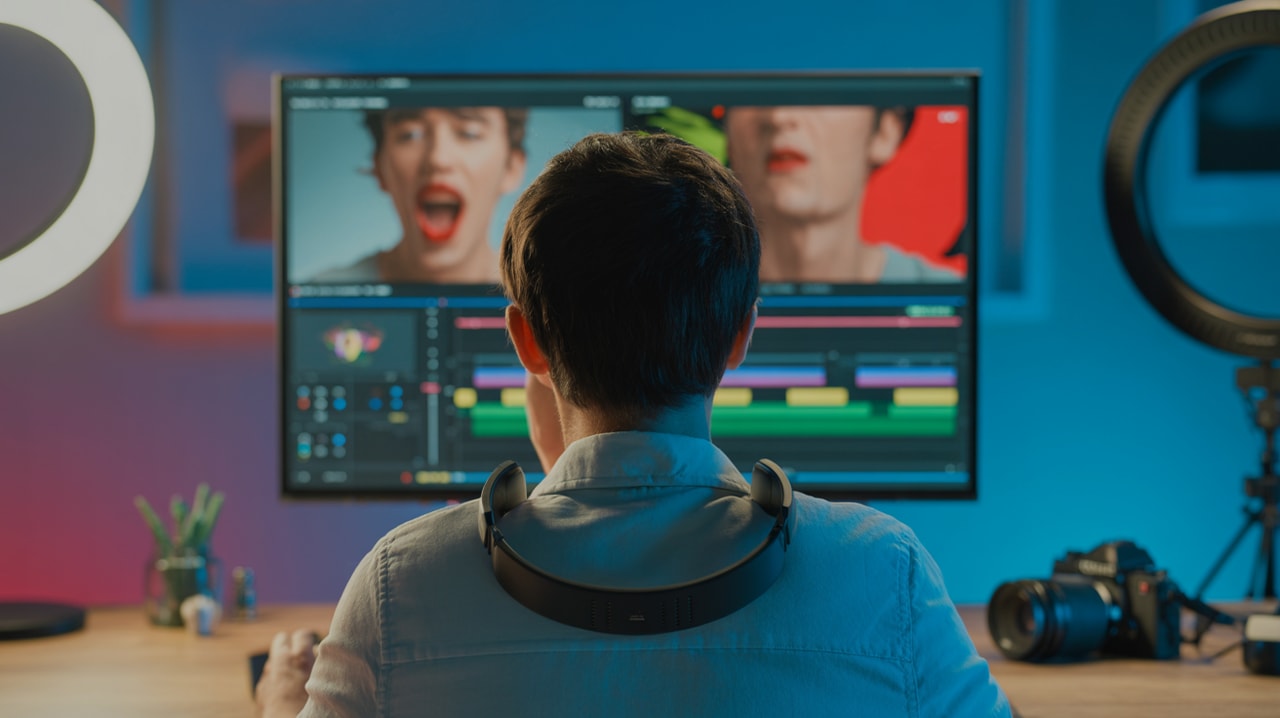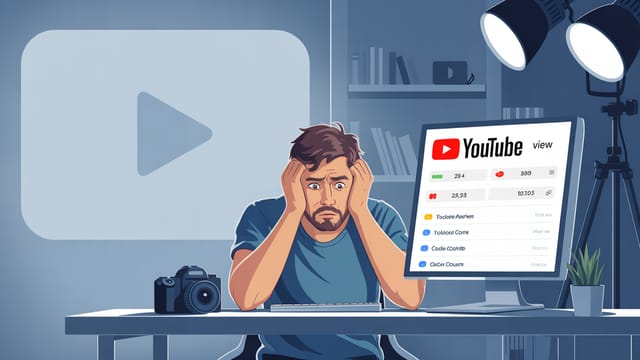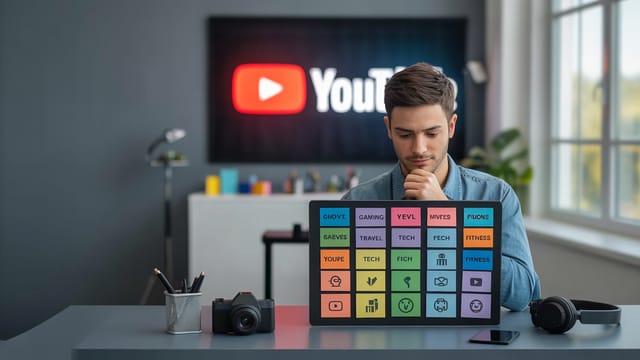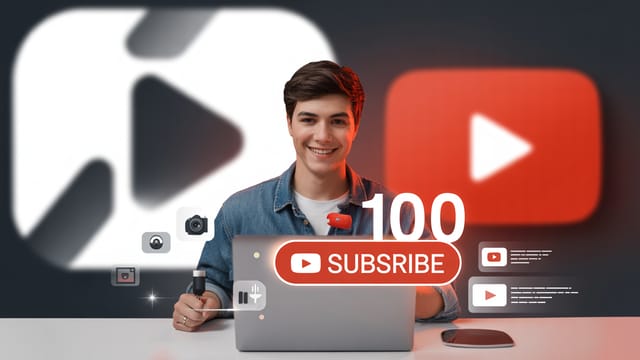
Ready to get your next 10,000 subscribers?
Join thousands of creators who use Subscribr to create faster, better YouTube videos.
Edit for Emotion: Storytelling Secrets in Your YouTube Cuts
Editing is often seen as the final, technical step in video creation – piecing together shots, fixing audio levels, and adding transitions. But for intermediate YouTubers looking to move beyond basic competency, editing is where the true magic happens. It's where raw footage transforms into a compelling narrative, where pacing dictates tension, and where music can evoke powerful emotions.
If you've mastered the basics of shooting and sound but find your videos still lack that certain spark – that ability to truly connect with viewers and keep them hooked – the answer lies in embracing editing as a storytelling art form. Your videos might be technically proficient, but without emotional resonance and narrative flow, they risk falling flat. This article delves into advanced editing techniques that will help you use your cuts, sound design, and pacing to tell more impactful stories on YouTube.
The Pillars of Emotional Editing: Story, Emotion, and Rhythm
Effective video editing, especially for YouTube, hinges on three core elements: Story, Emotion, and Rhythm. Think of these as the foundation upon which engaging content is built in the edit suite.
- Story: At its heart, editing is about guiding the viewer through a journey. Your cuts decide what the audience sees and when, shaping their understanding of events and characters (even if that character is just you!). Every edit should serve the narrative, pushing the story forward and building towards a clear conclusion. It's about showing cause and effect – ensuring each moment logically leads to the next – and implementing setup and payoff, introducing elements early that are resolved later for a satisfying viewer experience.
- Emotion: How do you want your audience to feel while watching? Editing is your most powerful tool for manipulating emotional tone. Music, sound effects, color grading, and the timing of your cuts all contribute to the emotional landscape of your video. Whether you want to build suspense, evoke joy, or create a sense of melancholy, your editing choices are paramount.
- Rhythm: The pace and flow of your edit create its rhythm. Fast cuts build energy and excitement, while slower pacing allows for reflection and emphasis on detail. The rhythm should match the content and the emotional beat of the story, preventing monotony and keeping viewers engaged. Your video should feel like a roller coaster, with varying energy levels that keep the audience on their toes.
Mastering these three pillars in the edit is crucial for transforming raw footage into a captivating story that holds viewer attention and addresses the implicit pain point of videos lacking engagement despite technical skill.
Building Suspense and Excitement Through Editing
Creating tension and excitement is a key part of engaging storytelling. Editing offers numerous techniques to achieve this:
- Pacing and Quick Cuts: Rapid-fire cuts, especially in montages or action sequences, instantly inject energy and build excitement. The quick succession of images prevents the viewer from settling, creating a sense of urgency. Conversely, strategically slowing down the pace before a big reveal can heighten anticipation.
- Sound Design: Music is a powerful tool for building suspense. Gradually building scores, the introduction of tense chords, or the use of rhythmic sound effects can signal impending action or danger. "Riser" sound effects, which increase in pitch and intensity, are classic examples used to build anticipation in the seconds leading up to a significant moment. Sound effects can also emphasize actions or events, making them feel more impactful.
- Visual Cues and Reveals: Use editing to control what the audience sees and when. Show glimpses of something without fully revealing it. Cut between different perspectives to create a sense of unease or mystery. The timing of a visual reveal, held back until the last possible moment, can be incredibly effective for building excitement.
- Holding Tension: As highlighted in YouTube strategy insights, suspense is the difference between good and great creators. It's about holding unresolved tension. This can be micro (within a single video, like a challenge with an unknown outcome) or macro (across a series of videos). Your editing should emphasize the unanswered questions or challenges, making the audience want to stick around for the resolution.
- Dynamic Visuals: Incorporate dynamic editing techniques like motion tracking to have text or graphics follow subjects, or use subtle screen effects to add visual interest during key moments. Auto-captions also not only improve accessibility but can be styled and timed to enhance the visual rhythm.
By intentionally employing these techniques, you can guide your viewers through emotional peaks and valleys, making your videos more dynamic and memorable.
The Role of Music in Shaping Narrative and Emotion
Music is far more than just background noise; it's a non-dialogue language that speaks directly to the viewer's emotions. Your music choices in the edit are critical to effective storytelling:
- Setting the Tone: Music instantly establishes the mood of a scene or video. A cheerful ukulele track sets a different tone than a dramatic orchestral score. Choose music that aligns with the intended emotional state of that part of your story.
- Enhancing Emotional Beats: Music can amplify the emotions already present in your visuals. A sad scene becomes more poignant with melancholic music, while a moment of triumph feels more impactful with an uplifting track. Match the intensity and style of the music to the emotional arc of your narrative.
- Guiding the Viewer: Music can subtly cue the audience about what's happening or what's about to happen. Tense music signals danger or conflict, while calming music indicates resolution or peace. Building music can create anticipation, signaling that something important is coming.
- Creating Transitions: Music can smooth transitions between different sections or moods within your video. A change in music can signal a shift in location, time, or emotional state.
- Adding Subtext: Music can add layers of meaning that aren't explicitly stated in the visuals or dialogue. Ironic music choices, for example, can create a sense of unease or humor.
Choosing the right music requires careful consideration. Don't just pick a track you like; pick a track that serves your story and enhances the emotional experience for the viewer. The strategic use of music is a hallmark of professional-level video editing and directly addresses the pain point of videos lacking engagement or impact.
Improving Narrative Flow Through Editing Techniques
A well-edited video flows seamlessly, pulling the viewer along from beginning to end without jarring interruptions. Improving narrative flow involves several key editing techniques:
- Cause and Effect Editing: Ensure that your cuts create a logical progression of events. Each shot or scene should feel like a consequence of what came before, driving the story forward. Avoid simply presenting a series of events; instead, show how one event leads to another.
- Setup and Payoff: Introduce elements early in your video (the setup) that will become significant later (the payoff). This could be a piece of information, an object, or a character's goal. Your editing should subtly highlight the setup and then deliver a satisfying payoff, rewarding attentive viewers and creating a sense of closure.
- Subverting Expectations: Once you understand common narrative structures and viewer expectations, you can use editing to cleverly deviate from them. This doesn't mean random twists, but rather using previously established setups to deliver unexpected, yet logical, outcomes. This keeps the audience engaged and guessing.
- Show, Don't Tell: This is a fundamental storytelling principle that editing enables. Instead of explaining a struggle, show it through your footage. Instead of saying you were determined, show moments of perseverance. Your editing should prioritize visual storytelling over exposition whenever possible.
- Focusing on Key Moments: Review your footage and identify the moments that are essential to your story. Ruthlessly cut anything that doesn't move the narrative forward or serve a clear purpose. This helps maintain a tight, engaging flow. Subscribr's Research Assistant and video analysis tools can help you analyze successful video structures and identify key narrative beats in other creators' content.
- Varying Pacing: As mentioned earlier, a consistent pace can become monotonous. Varying your pacing – speeding up for action, slowing down for emotional moments or explanations – keeps the viewer's attention and matches the rhythm of your story.
- Strategic Transitions: While quick cuts are often favored on YouTube, thoughtful transitions can also enhance flow. J-cuts (where the audio from the next clip starts before the visual) and L-cuts (where the audio from the current clip continues into the next visual) are simple techniques that create smoother, more natural-sounding transitions. More stylized transitions should be used intentionally to convey a specific mood or shift.
- Structuring with Acts: Thinking of your video in terms of a simple 3-act structure (setup, rising action/obstacle, climax/resolution) can provide a strong framework for organizing your edit and ensuring a clear narrative arc. Define a clear external goal for your video's subject (often you) and look for the internal transformation or lesson learned that emerges during filming and editing.
Improving narrative flow through editing is a process of intentional decision-making about what to show, when to show it, and how to connect each piece. It's about creating a compelling journey for the viewer.
Technical Skill and Post-Production Best Practices
While storytelling is the art, a solid technical foundation is essential. Addressing the pain point of achieving consistent, professional-level quality requires attention to post-production best practices:
- Color Grading: Color influences the emotional tone and visual consistency of your video. Learn the basics of color correction (fixing white balance, exposure) and color grading (applying stylistic looks). Consistent color across your videos contributes to a professional brand identity.
- Sound Mixing: Clear, well-mixed audio is non-negotiable. Ensure dialogue is easily understood, background music is at an appropriate level, and sound effects enhance without distracting. Learn about audio compression, EQ, and noise reduction to polish your sound.
- Captions: Adding captions (either manually refined or using auto-caption tools) improves accessibility and can boost viewer retention, especially for those watching without sound.
- Export Settings: Understanding the correct export settings for YouTube ensures your video looks and sounds its best after upload. Pay attention to resolution, frame rate, codec, and bit rate.
Developing technical proficiency in these areas is an ongoing process, but it's crucial for creating a polished final product that supports your storytelling efforts.
Monetization Angle: Promoting Advanced Editing Skills
As you refine your editing skills and master the art of storytelling through your cuts, you not only create more engaging content but also open up potential monetization avenues. For intermediate creators, this could involve promoting courses on advanced editing, visual storytelling, or narrative structure for video.
By demonstrating your expertise through your own channel's high-quality, emotionally resonant videos, you build credibility. You can then recommend resources – including potentially courses you create or affiliate for – that helped you reach that level. Highlighting specific techniques like using music for emotional impact or structuring a narrative with editing provides concrete examples of the value these advanced skills offer.
Conclusion
Editing is where the true power of video storytelling is unleashed. By focusing on the principles of Story, Emotion, and Rhythm, and by intentionally applying techniques for building suspense, utilizing music effectively, and refining narrative flow, you can elevate your videos from technically competent to truly captivating. Address the pain points of inconsistent quality and lack of impact by committing to post-production best practices. As you grow your skills, consider how you can share that knowledge, potentially promoting courses on advanced editing and visual storytelling.
Embrace the edit suite not just as a place to assemble clips, but as a canvas for weaving narratives that resonate deeply with your audience. This is where you find your unique voice and make your videos unforgettable.





